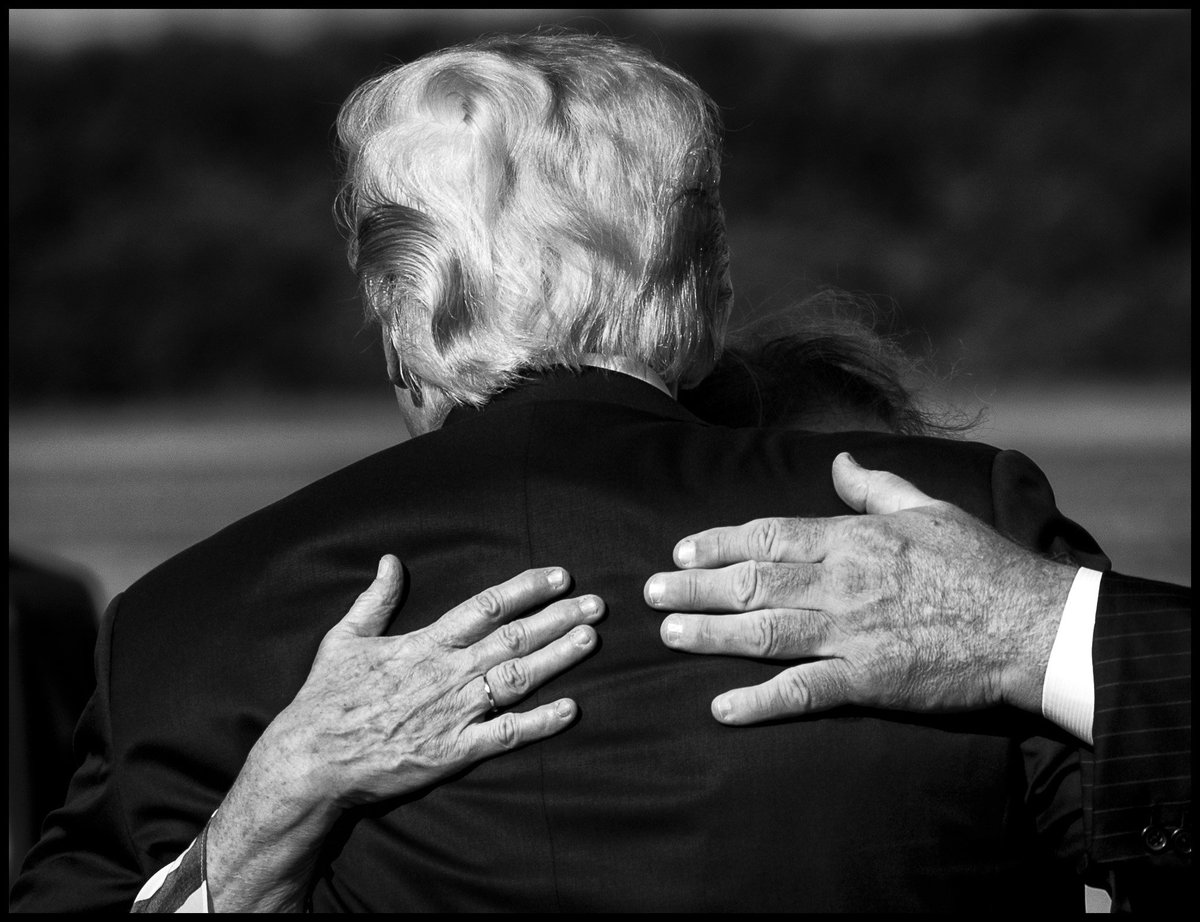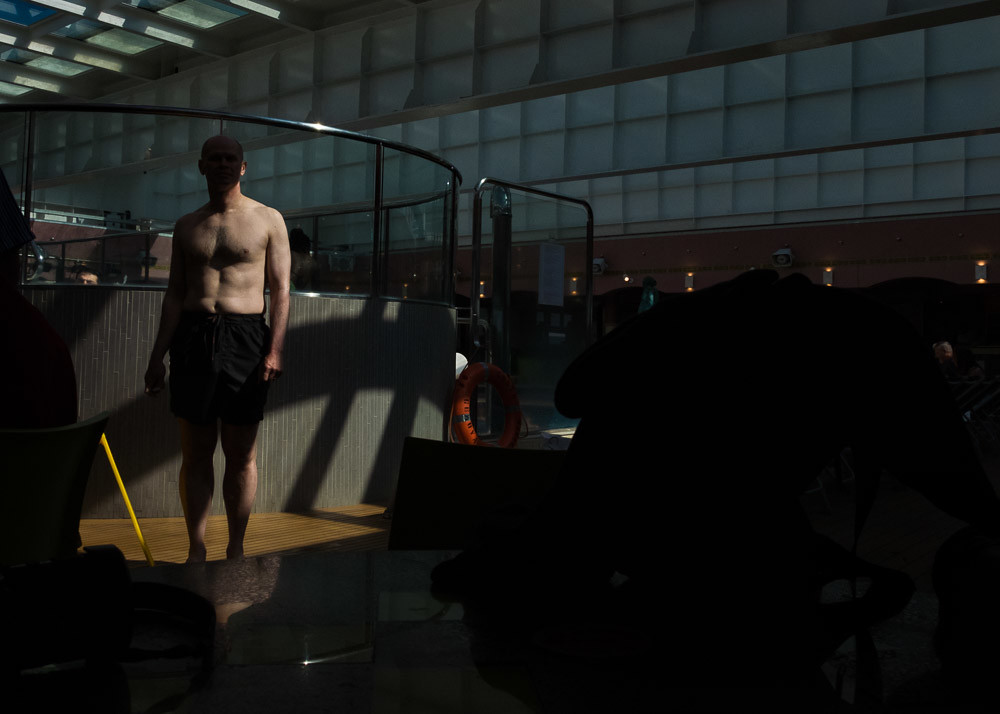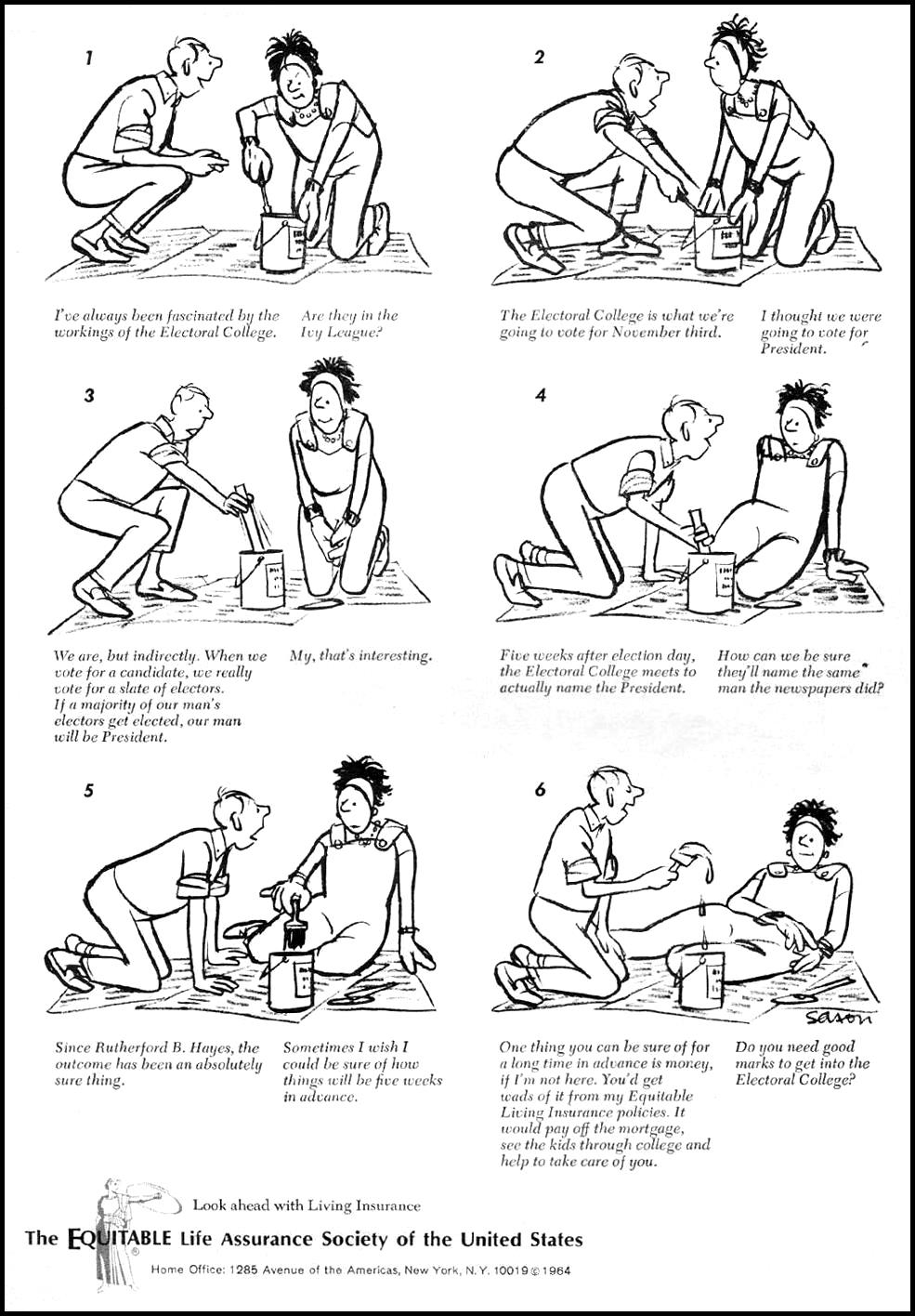.
![]()
![]()
Dawn Sturgess - The terrible death of Dawn Sturgess casts a new shadow over the Salisbury Affair. Dawn appears to have been a popular and well grounded woman with close friend and family ties, whose life had taken a downward turn before being cruelly ended.: tweet via Craig Murray @CraigMurrayOrg, 2:52 AM 9 June 2018
![]()
![]()
![]()
Guys, I don't want to oversell this, but I think I've blown this wide open. I just drove through #Amesbury and it turns out it's quite near to #PortonDown. I realise nobody else has probably spotted this. #QAnon #OSINT #Skripal: image via Matt Kane @ascorbic, 6 July 2018
![]()
![]()
The hands of Governor Jim Justice of West Virginia, right, and his wife Cathy Justice left, are seen as they greet @realDonaldTrump as he arrives in West Virginia to make remarks at the Salute to Service dinner at the Greenbrier in White Sulphur Springs. #westvirginia: image via Doug Mills #dougmillsnyt, 3 July 2018
2018-06-29_12-29-59 [Pasar Induk Kramati Jati, Jakarta, Indonesia]: photo by Chris Tuarissa, 24 June 2018
![2018-06-29_12-29-59 | by Chris Tuarissa]()
![2018-06-29_12-29-59 | by Chris Tuarissa]()

#India Railways linemen inspect tracks as a suburban train goes past during rain in Mumbai Photo @thisisindra #AFP: image via Frédérique Geffard @fgeffardAFP, 8 July 2018
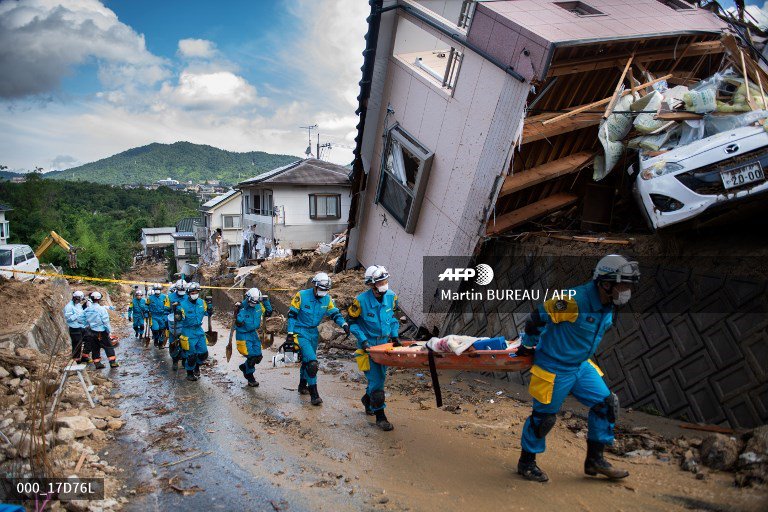
#Japan #JapanfloodsA desperate wait for news after deadly Japan rains #AFP Photo @MartinBureau7: image via AFP Photo @AFPphoto, 1:31 PM 9 July 2018
![]()
#South Sudan A woman takes care of her new-born baby at her home after a World Food Programme (WFP) plane dropped sacks of maize and sorghum from air in Jeich village Photo @Patrassa AFP: image via Frédérique Geffard @fgeffardAFP, 8 July 2018
![]()
Bags full of it: at a private opening at a Versace store in Beverly Hills.: photo by Lauren Greenfield /The Guardian, 8 June 2018

#South Sudan A woman takes care of her new-born baby at her home after a World Food Programme (WFP) plane dropped sacks of maize and sorghum from air in Jeich village Photo @Patrassa AFP: image via Frédérique Geffard @fgeffardAFP, 8 July 2018

Bags full of it: at a private opening at a Versace store in Beverly Hills.: photo by Lauren Greenfield /The Guardian, 8 June 2018

The deadly substance that killed #DawnSturgess is the same nerve agent used to poison former Russian spy Sergei Skripal and his daughter Yulia. Both survived the attack - which the #UK has blamed on #Russia: image via PendletonNW @PendletonNW, 8 July 2018
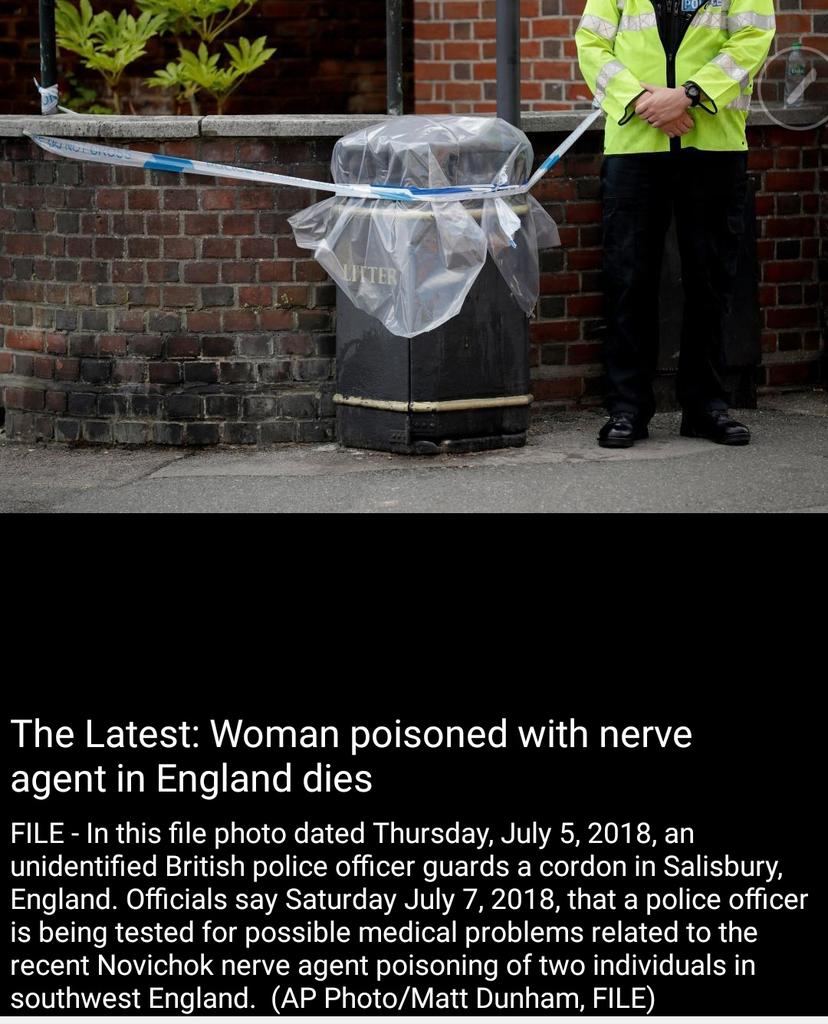
The pleasure of not knowing vs the horror of knowing
Guys, I don't want to oversell this, but I think I've blown this wide open. I just drove through #Amesbury and it turns out it's quite near to #PortonDown. I realise nobody else has probably spotted this. #QAnon #OSINT #Skripal: image via Matt Kane @ascorbic, 6 July 2018
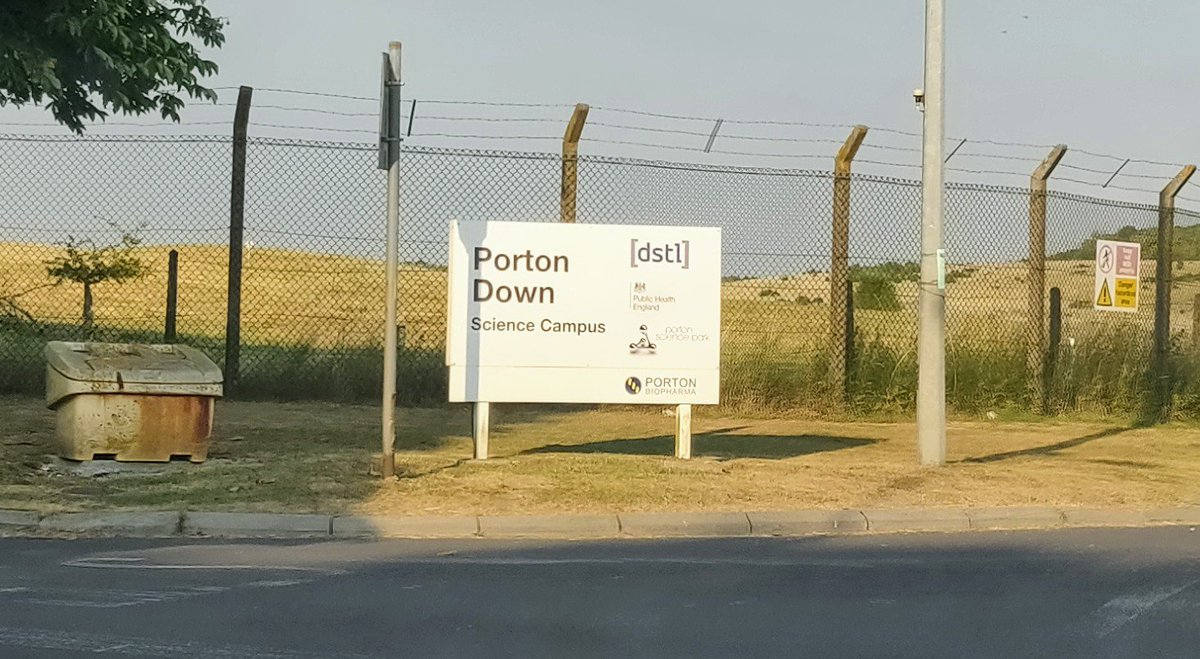
Guys, I don't want to oversell this, but I think I've blown this wide open. I just drove through #Amesbury and it turns out it's quite near to #PortonDown. I realise nobody else has probably spotted this. #QAnon #OSINT #Skripal: image via Matt Kane @ascorbic, 6 July 2018
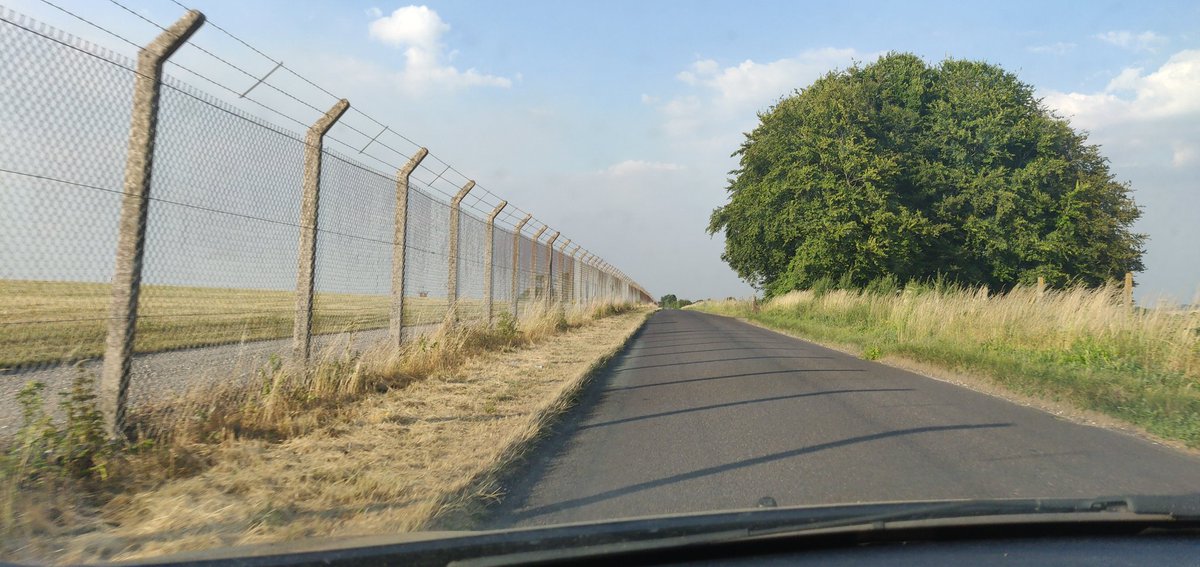
Guys, I don't want to oversell this, but I think I've blown this wide open. I just drove through #Amesbury and it turns out it's quite near to #PortonDown. I realise nobody else has probably spotted this. #QAnon #OSINT #Skripal: image via Matt Kane @ascorbic, 6 July 2018
The past Porton Down can't hide: As an inquest reopens into the death of a young airman 51 years ago, Rob Evans reveals the secrets of Britain's nerve gas tests: The Guardian, 6 May 2004
Tucked away in 7,000 acres of beautiful Wiltshire countryside lies one of Britain's most infamous scientific establishments. Porton Down, founded in 1916, is the oldest chemical warfare research installation in the world. The tight secrecy which has surrounded the establishment for decades has fed the growth of all sorts of myths and rumours about its experiments. One Whitehall official once remarked that Porton had an image of "a sinister and nefarious establishment".
The Porton experiments on humans have attracted a good deal of criticism. It is, for example, alleged that the human "guinea pigs' - drawn from the armed forces and supposedly all volunteers - were duped into taking part in the tests. There are still concerns that the tests have damaged the long-term health of the human subjects.
This week, its work has been thrown into the spotlight once again: an inquest was reopened into the death, in May 1953, of a young airman, Ronald Maddison. He died after liquid nerve gas was dripped on to his arm by Porton scientists in an experiment. The original inquest decided that his death was accidental, but this new inquest will examine fresh evidence and decide if the verdict should stand.
But what were the scientists at Porton doing? Years after the experiments ended, did they achieve anything of scientific value? The Guardian has pieced together a comprehensive and surprising picture of the nerve gas experiments, drawn from reports of the tests uncovered at the Public Record Office and new documents obtained under the "open government" code.
From a purely scientific point of view, they produced a huge amount of data about the effects of nerve gas on the human body. This data in turn has enabled Porton to develop some of the most sophisticated defences in the world to protect Britain's armed forces from chemical attack. Porton acknowledges that the human experiments have made a "vital contribution" to this protection. The data also helped Britain to develop its own arsenal of nerve gas before such plans were finally shelved in the late 1960s.
From 1945 to 1989, Porton exposed more than 3,400 human "guinea pigs" to nerve gas. It seems probable that Porton has tested more human subjects with nerve gas, for the longest period of time, than any other scientific establishment in the world. Two other nations have admitted testing nerve gas on humans: the American military exposed about 1,100 soldiers between 1945 and 1975, and Canada tested a small number before 1968. Other countries, including France, the old Soviet Union and Iraq, are also likely to have exposed humans to nerve gas, but very little is known about their tests.
The group of chemicals known as nerve gases were first developed as weapons by the Nazis before and during the second world war. German scientists discovered the potency of these organophosphorous compounds which, in tiny quantities, disrupt a key element of the nervous system.
Human muscles contract when a chemical, acetylcholine, is released from the nerve endings. Muscles do not exist in a permanent form of contraction because acetylecholine is destroyed in a split second by an enzyme (acetylcholinesterase), thus allowing the muscle to relax again. Nerve gases inactivate this important enzyme, and since it is prevented from working, the muscle goes into a state of spasm from which it cannot be relaxed. Victims die because the most important muscles in the body - those of the heart and the rib cage, which control the emptying and filling of the lungs - are paralysed. They suffocate swiftly in a horrifying death.
The nerve gases are more deadly than any other chemical weapon, but during the second world war, only the Germans had spotted their full potential and produced an arsenal of the munitions. As one Porton official has commented, the British and their allies were "caught with our pants down".
As the Third Reich was collapsing in April 1945, the British discovered stocks of the gas in Germany. Within two weeks, Porton had tested the new gas on batches of human subjects, even though they did not know what the unknown compound was or how it harmed the body.
The discovery of the new weapons instantly transformed Porton, as all its previous work on other chemicals, such as mustard gas, was downgraded. Porton scientists quickly had to find out how nerve gases attacked the human body.
One of the early tests established just how little one of the nerve gases, sarin, was needed to trigger a reaction in humans. Fifty-six men were sent into gas chambers and exposed to "low concentrations" of gas. The scientists watching recorded that after 20 minutes, the men started to suffer miosis (constriction of the pupil), one of the first symptoms of nerve gas poisoning. Their vision was blurred and darkened, in some cases for up to five days.
Fourteen men were exposed to repeated doses of sarin, some when they were still experiencing the effects of the previous poisoning. Porton scientists observed: "Repeated exposures produced, after the third or fourth occasion, an aggravation of effects ..."
By 1950, Porton had begun to test "considerable higher doses" of sarin on 133 men, and catalogued the severity of symptoms, such as runny noses, headaches, vomiting and eye pain.
Within two years, Porton had moved on to look at other aspects. In one study, in 1952, it wanted to see how sarin would impair the mental performance and intellectual ability of humans.
Twenty airmen were exposed to sarin and then measured to see how they performed in intelligence and aptitude tests. From this experiment, Porton inferred that after exposure, the men's visual co-ordination was worse, but their reasoning and intellectual capability had not deteriorated. Another 12 men were exposed to stronger doses of sarin - Porton found that the men appeared "behaviourally much less disturbed than the increased concentration (of sarin) would lead one to expect".
Maddison died during what is probably Porton's most controversial experiment. It will be at the heart of the inquest over the coming weeks. He was one of 396 men who took part in a large experiment whose aim was to "determine the dosage of [three nerve gases] which when applied to the clothed or bare skin of men would cause incapacitation or death".
The scientists were aiming to expose the men to sub-lethal quantities of the nerve gases and then measure how much each of the quantities was reducing the amount of cholinesterase enzymes in the body. They were trying to establish a ratio between the two figures and then extrapolate them to arrive at the lethal dose for humans. But they discovered that this theory was flawed, as there is no direct correlation.
After Maddison's death, Porton was limited in the amount of nerve gas it could test on humans, but the trials continued.
About 300 soldiers in the mid-1950s were used to see how well they could conduct military operations after they had been attacked with nerve gas. They were gassed with relatively low levels and then sent on a mock exercise. The men performed well in daylight, but less so at night. The biggest hindrance was that they could not see very well, but the scientists believed that a "determined infantryman" could still fight on after being exposed to low amounts of nerve gas.
They speculated that during the day, "a unit of intact morale" could cope, but at night, the men would have been vulnerable because they would have been prone to panic, especially since their sight was being hampered.
The psychological effects of nerve gas were a continuing focus of experiments in the 1950s. In one set of trials, the men underwent a series of intelligence and aptitude tests after being gassed. Porton found that the men were distinctly unhappy and depressed afterwards, emotions that were combined with a "feeling of reduced mental alertness and a tendency to social withdrawal".
In the late 1950s, Porton studied the effect of nerve gas on particular parts of the body. One study concluded that nerve gas did not impair hearing; this might have been a problem if troops could not, for instance, hear instructions or orders in the heat of the battle after a gas attack. Another looked at whether nerve gas hindered the circulation of blood through the veins in the leg; it didn't. Another examined the impact of nerve gas on the heart, as the scientists wanted to see if particular muscles between the ribs were responsible for one of the usual nerve gas symptoms - a "tightness in the chest".
In the later years of the programme, Porton seems to have focused on assessing the effects of nerve gas on the eyes, a crucial question because, for instance, pilots faced with reading complicated rows of instruments could be put out of action with a slightest amount of exposure to the gas.
The nerve gas programme was substantial at Porton because human testing has been an integral part of the establishment since it was founded. During the past 80 years, some 25,000 humans have been subjected to Porton's experiments, many in trials with other chemical weapons such as mustard gas and tear gas. Others were used simply to test defensive equipment without being exposed to chemicals.
Today, Porton is devoted totally to devising defensive measures against gas attacks. But the conduct and ethical standards of tests in the past will be under unprecedented scrutiny in the inquest over the coming weeks.
![]()
This is Ronald Maddison, a 20 year old Royal Air Force engineer who died at #PortonDown after being exposed to #NerveAgent. The truth about his death was covered up for 50 years by the government. #AmesburyIncident #Novichock2 #Skripals: image via One Ten Twelve @OneTenTwelve, 5 July 2018
After Maddison's death, Porton was limited in the amount of nerve gas it could test on humans, but the trials continued.
![]()
epa editor's choice 05 July 2018: Queen Elizabeth Gardens in Salisbury remains closed and cordoned off as investigations continue into how Dawn S. and Charlie R. were found unconscious on Saturday night, in Amesbury, Britain, 05 July 2018. Charlie R. and his partner Dawn S. had allegedly been exposed to the nerve agent Novichok, according to police. #QueenElizabethGardens #Unconscious #NerveAgent #Salisbury #Amesbury #Britain #UK #UnitedKingdom #epaphotos Photo epa-efe / Rick Findler: image via epaphotos @epaphotos, 5 July 2018
Drew a Glyph for you this morning.
![]()
Glyph for Angelica Clark who discovered an error in Broken Glory: Ed Sanders, 8 July 2018
( *if unable to view Robert Maddison's Monsoon Ghost Barge Scroll entry, don't blame Heraclitus, blame Google, whose blind labyrinthine cavern slaves we are)
![]()
Replying to @mumbaipressclubThanks to #RedInkAwards for this honour and recognition of my @AFPphoto of a Rohingya father wailing over the body of his son who breathed his last while making the perilous journey from Myanmar to Bangladesh. #Rohingya #Humanrights #AFP: image via Indranil Mukherjee @thisisindra, 19 May 2018
![]()
GAZA STRIP - Palestinian mourners carry the body of 23-year-old Ahmed Qutoosh, who died of his wounds endured during clashes with Israeli troops, during his funeral in Nuseirat Photo @mohmdabed @AFP: image via Frédérique Geffard @fgeffardAFP, 25 May 2018
![]()
#Spain An "aloitador" struggles with a wild horse in the "curro" during the "Rapa Das Bestas" traditional event in Sabucedo. During the 400-year-old horse festival, hundreds of wild horses are rounded up from the mountains, trimmed and marked. Photo @MiguelRiopa #AFP: image via AFP Photo @AFPphoto, 8 July 2018
The Porton experiments on humans have attracted a good deal of criticism. It is, for example, alleged that the human "guinea pigs' - drawn from the armed forces and supposedly all volunteers - were duped into taking part in the tests. There are still concerns that the tests have damaged the long-term health of the human subjects.
This week, its work has been thrown into the spotlight once again: an inquest was reopened into the death, in May 1953, of a young airman, Ronald Maddison. He died after liquid nerve gas was dripped on to his arm by Porton scientists in an experiment. The original inquest decided that his death was accidental, but this new inquest will examine fresh evidence and decide if the verdict should stand.
But what were the scientists at Porton doing? Years after the experiments ended, did they achieve anything of scientific value? The Guardian has pieced together a comprehensive and surprising picture of the nerve gas experiments, drawn from reports of the tests uncovered at the Public Record Office and new documents obtained under the "open government" code.
From a purely scientific point of view, they produced a huge amount of data about the effects of nerve gas on the human body. This data in turn has enabled Porton to develop some of the most sophisticated defences in the world to protect Britain's armed forces from chemical attack. Porton acknowledges that the human experiments have made a "vital contribution" to this protection. The data also helped Britain to develop its own arsenal of nerve gas before such plans were finally shelved in the late 1960s.
From 1945 to 1989, Porton exposed more than 3,400 human "guinea pigs" to nerve gas. It seems probable that Porton has tested more human subjects with nerve gas, for the longest period of time, than any other scientific establishment in the world. Two other nations have admitted testing nerve gas on humans: the American military exposed about 1,100 soldiers between 1945 and 1975, and Canada tested a small number before 1968. Other countries, including France, the old Soviet Union and Iraq, are also likely to have exposed humans to nerve gas, but very little is known about their tests.
The group of chemicals known as nerve gases were first developed as weapons by the Nazis before and during the second world war. German scientists discovered the potency of these organophosphorous compounds which, in tiny quantities, disrupt a key element of the nervous system.
Human muscles contract when a chemical, acetylcholine, is released from the nerve endings. Muscles do not exist in a permanent form of contraction because acetylecholine is destroyed in a split second by an enzyme (acetylcholinesterase), thus allowing the muscle to relax again. Nerve gases inactivate this important enzyme, and since it is prevented from working, the muscle goes into a state of spasm from which it cannot be relaxed. Victims die because the most important muscles in the body - those of the heart and the rib cage, which control the emptying and filling of the lungs - are paralysed. They suffocate swiftly in a horrifying death.
The nerve gases are more deadly than any other chemical weapon, but during the second world war, only the Germans had spotted their full potential and produced an arsenal of the munitions. As one Porton official has commented, the British and their allies were "caught with our pants down".
As the Third Reich was collapsing in April 1945, the British discovered stocks of the gas in Germany. Within two weeks, Porton had tested the new gas on batches of human subjects, even though they did not know what the unknown compound was or how it harmed the body.
The discovery of the new weapons instantly transformed Porton, as all its previous work on other chemicals, such as mustard gas, was downgraded. Porton scientists quickly had to find out how nerve gases attacked the human body.
One of the early tests established just how little one of the nerve gases, sarin, was needed to trigger a reaction in humans. Fifty-six men were sent into gas chambers and exposed to "low concentrations" of gas. The scientists watching recorded that after 20 minutes, the men started to suffer miosis (constriction of the pupil), one of the first symptoms of nerve gas poisoning. Their vision was blurred and darkened, in some cases for up to five days.
Fourteen men were exposed to repeated doses of sarin, some when they were still experiencing the effects of the previous poisoning. Porton scientists observed: "Repeated exposures produced, after the third or fourth occasion, an aggravation of effects ..."
By 1950, Porton had begun to test "considerable higher doses" of sarin on 133 men, and catalogued the severity of symptoms, such as runny noses, headaches, vomiting and eye pain.
Within two years, Porton had moved on to look at other aspects. In one study, in 1952, it wanted to see how sarin would impair the mental performance and intellectual ability of humans.
Twenty airmen were exposed to sarin and then measured to see how they performed in intelligence and aptitude tests. From this experiment, Porton inferred that after exposure, the men's visual co-ordination was worse, but their reasoning and intellectual capability had not deteriorated. Another 12 men were exposed to stronger doses of sarin - Porton found that the men appeared "behaviourally much less disturbed than the increased concentration (of sarin) would lead one to expect".
Maddison died during what is probably Porton's most controversial experiment. It will be at the heart of the inquest over the coming weeks. He was one of 396 men who took part in a large experiment whose aim was to "determine the dosage of [three nerve gases] which when applied to the clothed or bare skin of men would cause incapacitation or death".
The scientists were aiming to expose the men to sub-lethal quantities of the nerve gases and then measure how much each of the quantities was reducing the amount of cholinesterase enzymes in the body. They were trying to establish a ratio between the two figures and then extrapolate them to arrive at the lethal dose for humans. But they discovered that this theory was flawed, as there is no direct correlation.
After Maddison's death, Porton was limited in the amount of nerve gas it could test on humans, but the trials continued.
About 300 soldiers in the mid-1950s were used to see how well they could conduct military operations after they had been attacked with nerve gas. They were gassed with relatively low levels and then sent on a mock exercise. The men performed well in daylight, but less so at night. The biggest hindrance was that they could not see very well, but the scientists believed that a "determined infantryman" could still fight on after being exposed to low amounts of nerve gas.
They speculated that during the day, "a unit of intact morale" could cope, but at night, the men would have been vulnerable because they would have been prone to panic, especially since their sight was being hampered.
The psychological effects of nerve gas were a continuing focus of experiments in the 1950s. In one set of trials, the men underwent a series of intelligence and aptitude tests after being gassed. Porton found that the men were distinctly unhappy and depressed afterwards, emotions that were combined with a "feeling of reduced mental alertness and a tendency to social withdrawal".
In the late 1950s, Porton studied the effect of nerve gas on particular parts of the body. One study concluded that nerve gas did not impair hearing; this might have been a problem if troops could not, for instance, hear instructions or orders in the heat of the battle after a gas attack. Another looked at whether nerve gas hindered the circulation of blood through the veins in the leg; it didn't. Another examined the impact of nerve gas on the heart, as the scientists wanted to see if particular muscles between the ribs were responsible for one of the usual nerve gas symptoms - a "tightness in the chest".
In the later years of the programme, Porton seems to have focused on assessing the effects of nerve gas on the eyes, a crucial question because, for instance, pilots faced with reading complicated rows of instruments could be put out of action with a slightest amount of exposure to the gas.
The nerve gas programme was substantial at Porton because human testing has been an integral part of the establishment since it was founded. During the past 80 years, some 25,000 humans have been subjected to Porton's experiments, many in trials with other chemical weapons such as mustard gas and tear gas. Others were used simply to test defensive equipment without being exposed to chemicals.
Today, Porton is devoted totally to devising defensive measures against gas attacks. But the conduct and ethical standards of tests in the past will be under unprecedented scrutiny in the inquest over the coming weeks.

This is Ronald Maddison, a 20 year old Royal Air Force engineer who died at #PortonDown after being exposed to #NerveAgent. The truth about his death was covered up for 50 years by the government. #AmesburyIncident #Novichock2 #Skripals: image via One Ten Twelve @OneTenTwelve, 5 July 2018
After Maddison's death, Porton was limited in the amount of nerve gas it could test on humans, but the trials continued.
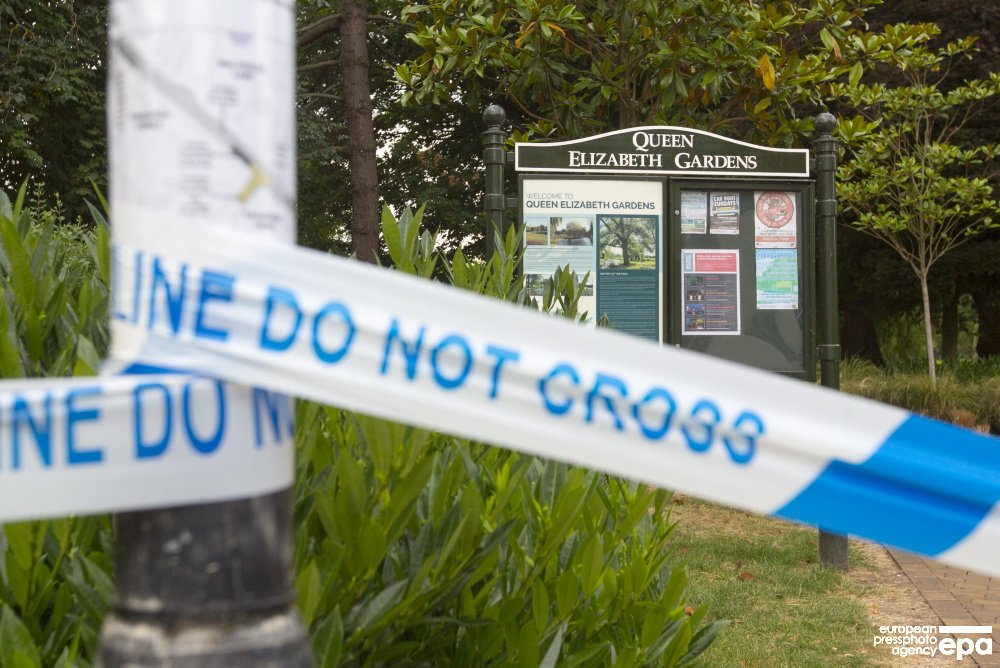
epa editor's choice 05 July 2018: Queen Elizabeth Gardens in Salisbury remains closed and cordoned off as investigations continue into how Dawn S. and Charlie R. were found unconscious on Saturday night, in Amesbury, Britain, 05 July 2018. Charlie R. and his partner Dawn S. had allegedly been exposed to the nerve agent Novichok, according to police. #QueenElizabethGardens #Unconscious #NerveAgent #Salisbury #Amesbury #Britain #UK #UnitedKingdom #epaphotos Photo epa-efe / Rick Findler: image via epaphotos @epaphotos, 5 July 2018
Robert Maddison's Monsoon Ghost Barge Scroll Entry Remembers Dawn*
Drew a Glyph for you this morning.
I was so proud of myself, having a list at the end of Broken Glory
of the sources for every single assertion in the book, and then
you discovered, early in the book, a factual error for early 1967
when you visited Burton and Taylor. Oi oi oi.
Now, at signings have to hand correct the book.
Glyph for Angelica Clark who discovered an error in Broken Glory: Ed Sanders, 8 July 2018
( *if unable to view Robert Maddison's Monsoon Ghost Barge Scroll entry, don't blame Heraclitus, blame Google, whose blind labyrinthine cavern slaves we are)

Replying to @mumbaipressclubThanks to #RedInkAwards for this honour and recognition of my @AFPphoto of a Rohingya father wailing over the body of his son who breathed his last while making the perilous journey from Myanmar to Bangladesh. #Rohingya #Humanrights #AFP: image via Indranil Mukherjee @thisisindra, 19 May 2018

GAZA STRIP - Palestinian mourners carry the body of 23-year-old Ahmed Qutoosh, who died of his wounds endured during clashes with Israeli troops, during his funeral in Nuseirat Photo @mohmdabed @AFP: image via Frédérique Geffard @fgeffardAFP, 25 May 2018

#Spain An "aloitador" struggles with a wild horse in the "curro" during the "Rapa Das Bestas" traditional event in Sabucedo. During the 400-year-old horse festival, hundreds of wild horses are rounded up from the mountains, trimmed and marked. Photo @MiguelRiopa #AFP: image via AFP Photo @AFPphoto, 8 July 2018

A sun halo forms in the sky around the sun near the Angel of Independence monument yesterday in Mexico City. Sun halos are caused by light interacting with ice crystals in the atmosphere. Photo Anthony Vazquez: image via AP Images @AP_Images, 8 July 2018
The hands of Governor Jim Justice of West Virginia, right, and his wife Cathy Justice left, are seen as they greet @realDonaldTrump as he arrives in West Virginia to make remarks at the Salute to Service dinner at the Greenbrier in White Sulphur Springs. #westvirginia: image via Doug Mills #dougmillsnyt, 3 July 2018
2018-06-29_12-29-59 [Pasar Induk Kramati Jati, Jakarta, Indonesia]: photo by Chris Tuarissa, 24 June 2018

2018-06-29_12-29-59 [Pasar Induk Kramati Jati, Jakarta, Indonesia]: photo by Chris Tuarissa, 24 June 2018

2018-06-29_12-29-59 [Pasar Induk Kramati Jati, Jakarta, Indonesia]: photo by Chris Tuarissa, 24 June 2018








